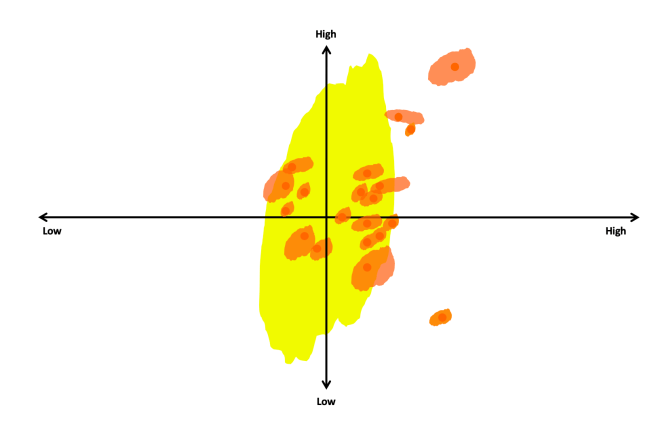At a workshop I facilitated a few weeks ago, we asked everyone to share, in small groups, the characteristics of the most effective leader they had ever worked with.
The most common behavior they mentioned was: this is someone who always has my back.
It makes sense, and aligns with Reed Hastings’ / Netflix ideas about how to think about our working relationships: we are not a family, we are a high-performing sports team. From the Netflix Culture page:
A family is about unconditional love. A dream team is about pushing yourself to be the best possible teammate, caring intensely about your team, and knowing that you may not be on the team forever. Dream teams are about performance, not seniority or tenure. It is up to the manager to ensure that every player is amazing at their position, plays effectively with others and is given new opportunities to develop. That’s how we keep winning the championship (entertaining the world). Unlike a sports team, as Netflix grows, the number of players also grows. We work to foster players from the development leagues so they can become the stars of tomorrow.
The best teammates, and the best bosses, are the ones who make you better, the ones you can rely on, the ones that will back you up if someone comes after you and catch you if you fall.
The story could end here, but it doesn’t.
Back at the workshop, we moved from small breakout groups to the full group.
In the report out, the “someone who has my back” headline subtly got transformed into “someone who protects their team,” and not everyone noticed at first how different these two things were.
Yes, great leaders protect—give cover to—their teams. But that is hardly enough.
“Protection” and “having your back” are not the same thing.
When I have your back, that means that I am there to support you, to be your advocate, to ensure that you are operating in a context where you can always succeed.
And that also means that, in private, I am telling you the hard truths, sharing where I think you have more to give, expressing to you what I know is possible for you and for us. I’m a coach, to be sure, and I’m one who tells you the whole story.
That’s a much broader remit than someone who only protects her team. Someone whose headline is “protection” is prioritizing safety and may be shying away from productive conflict and from the messages that need, over time, to be heard.
You can see this distinction play out in Google’s lessons from how to create great teams, based on research they conducted over two years looking at 180 teams.
The five characteristics Google identified as mattering the most were:
- Dependability: I talked about this in Teamwork, partnership, culture, and passing the ball
- Structure and clarity: well defined roles and goals
- Meaning: “the work has personal significance to each member”
- Impact: “the group believes their work is purposeful and positively impacts the greater good.”
- Psychological Safety: “A situation in which everyone is safe to take risks…A culture where managers provide air cover and create safe zones so employees can let down their guard.”
Someone who protects their team is likely providing psychological safety, and that’s important enough that it makes the Top 5 list. But limiting ourselves to “protecting” team members means we’re playing a narrow role, one in which we’re more likely to see ourselves as a filter or a buffer between what we see and what they see.
That’s certainly helpful some of the time: when a team member lacks confidence in certain tasks; when they are newer; when the team is forming and the bonds between folks, and the resilience of the team as a whole, is low.
But in the long run, protection alone is not enough.
We have each other’s back by buffering sometimes, filtering others, but, also, by providing real clarity of role and expectation, of potential, of upside.
And, most of all, we have each other’s back by communicating our clear conviction that we know this person can be great, and that we will walk with them down the path to greatness.













